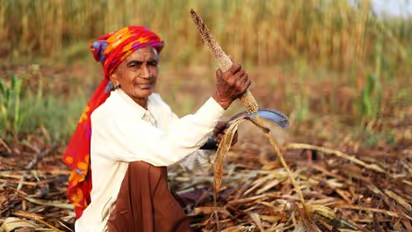Millet: Why this Indian superfood is a 'smart' choice for the world

Synopsis
The label of 'poor man's food' has been attached to millet varieties for long, till it caught the attention of the advocates of healthy food. Studies show millets are the solution to health issues, including diabetes
With Prime Minister Narendra Modi highlighting the role of millets in solving malnutrition and hunger while speaking at the G20 Summit in Indonesia, this humble superfood of the Indian diet has come under the global spotlight.
"In India, for sustainable food security, we are promoting natural farming and re-popularising nutritious & traditional food grains like millet. Millets can also solve global malnutrition and hunger. We all must celebrate the International Year of Millets with great enthusiasm next year," said the Prime Minister.
Also Read: Explained: Why India at the helm of G20 is a historic moment
With 2023 being declared the International Year of Millets, the government has decided to make it a people's movement. Through these campaigns and increased cultivation, Indian millets, recipes, and value-added products are going global.
Millet in India
India is one of the leading producers of millet in the world, with an estimated share of around 41 per cent in global production. In 2020, of the world production of 30.464 million metric tons, India's share was 12.49 MMT. According to reports, the country recorded a 27 per cent growth in millet production in 2021-22.
Millets were the country's staple food, especially in central and southern India and the hilly regions, in the 1940s and 50s until they were completely replaced by wheat and rice. The nutritious millets were soon relegated to the cuisines of rural India, but there came a resurgence a few years back as these grains were brought back to dining tables, courtesy of the surge in healthy eating trends.
Millets are known as the powerhouse of nutrients as they contain protein, fibre, vitamins and minerals. Various types of millets available in the country are jowar (white millet), ragi (finger millet), korra (foxtail millet), arke (kodo millet), sama (little millet), bajra (pearl millet), chena/barr (proso millet) and sanwa (barnyard millet).
Poor man's food? Not anymore
The label of 'poor man's food' has been attached to millet varieties for long till it caught the attention of the advocates of healthy food. The consumption of refined grains like rice has been linked to India's rise to the diabetes capital of the world.
A study published in Frontiers in Nutrition in July 2021 shows that regular consumption of millets reduced average fasting blood sugar levels by 12 per cent and post-meal blood sugar levels by 15 per cent. This happens because millets have a lower glycemic index than their alternatives, like white rice and refined wheat.
Other studies too have been highlighting the health benefits of these 'smart foods' recently. According to a recent study conducted by seven organizations in four countries and led by Dr S Anitha, Senior Scientist-Nutrition at the International Crops Research Institute of the Semi-Arid Tropics, millets can boost growth in children and adolescents by 26–39 per cent when they replace rice in standard meals. The study results suggest that millet can significantly contribute to overcoming malnutrition. A comparison of the nutritive value of millet with that of rice and wheat clearly points out why India, and the world, should bring the former to kitchens.
While ragi contains 344 grams of calcium, it is 33 grams in rice and 30 in wheat. And ragi contains 55.6 per cent more fibre than rice and wheat, which is important because fibre is an important component in nutrition and helps control high blood sugar levels.
$12 billion market by 2025
In India, millets are generally grown as mixed crops in regions where rainfall is minimal. Most of the varieties of millet take only 3-4 months to farm, from sowing to harvest. Currently, millets are mainly cultivated in Uttar Pradesh, Odisha, Punjab, Madhya Pradesh, Chhattisgarh, Andhra Pradesh, Maharashtra and Rajasthan.
Many states, including Odisha, Assam and Rajasthan, have taken steps to increase millet cultivation. Though India exports millet to the United Arab Emirates, Nepal, Saudi Arabia, the United Kingdom, and the United States, it comes to only one per cent of the total millet production.
Indonesia, Belgium, Japan, Germany, Mexico, Italy, the US, the United Kingdom, Brazil, and the Netherlands are the major millet-importing countries. It is estimated that the global millet market will grow from the current valuation of $9 billion to $12 billion by 2025.
Also Read: The most commonly used password in India is... 'Password'
Stay updated with the Breaking News Today and Latest News from across India and around the world. Get real-time updates, in-depth analysis, and comprehensive coverage of India News, World News, Indian Defence News, Kerala News, and Karnataka News. From politics to current affairs, follow every major story as it unfolds. Get real-time updates from IMD on major cities weather forecasts, including Rain alerts, Cyclone warnings, and temperature trends. Download the Asianet News Official App from the Android Play Store and iPhone App Store for accurate and timely news updates anytime, anywhere.